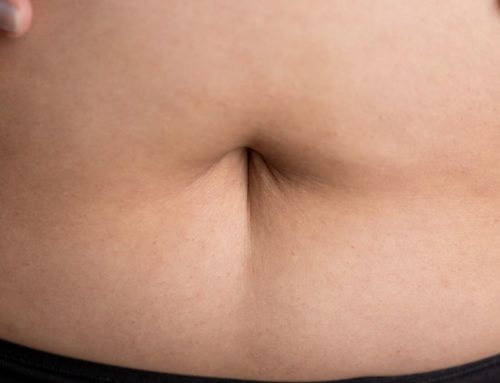“Just because essential oils are natural does not mean they do not have potential risks, or hazards if used inappropriately.” – Jane Buckle, Clinical Aromatherapy: Essential Oils in Healthcare 3rd Edition
Once every couple of months or so I get a message from one of my midwife or OB/GYN colleagues asking for a co-consult on one of their patients/clients who is using essential oils during pregnancy. Some of the methods of use or essential oils employed put a great amount of risk on the parent-to-be and the developing fetus and I want to address those here. Why? Unfortunately these risky practices have led to these very same colleagues coming back with reports of unwanted outcomes, including preeclampsia, gestational diabetes, premature delivery, and most devastatingly are the reports of fetal loss.
Aromatherapy can be a natural and safe modality to ease many of the discomforts and challenges associated with pregnancy – insomnia, water retention in the extremities (hello, pregnancy-induced carpal and tarsal tunnel syndrome anyone?!?), skin changes, digestive complaints, and so forth. With the rise of essential oil popularity we’re also seeing a rise in uninformed dosing; unfortunately the childbearing year has not escaped this trend.
As a trained clinical aromatherapist, diplomate in aromatic medicine, board certified reflexologist, and birth doula I hear from clients and providers that find it hard to access information on the safety of essential oils in the childbearing year. If we thought women’s health is poorly researched, pregnancy just takes it up an extra notch. Ethically-speaking, researcher’s hands are tied in many ways with this population, and understandably so. The research that is out there has evolved since I founded The Barefoot Dragonfly LLC in 2004. There’s a number of books that delve into this topic in small and large ways and then there’s a plethora of books and articles out there written from a sales and marketing perspective and by mommy-blogger types. In an age of self-proclaimed experts, inexperienced practitioners, fear-mongers, sales reps and retailers, and cult followers I’ll tell you that some of my red flags navigating this subject matter are:
- All or nothing approaches – the individual either recommends all essential oils as being “safe and natural” for all scenarios, or they only recommend 3-5 essential oils for pregnancy.
- Education + experience – I’m always looking for the background of the individual sharing their expertise and for me the winning combination is someone with an education in the subject matter (the childbearing year + aromatic chemistry), and hands-on experience in the field. In my own case I’ve attended 100+ births as a doula, I’ve had 11,000+ client encounters, and my training has centered largely around wellness modalities specific to women’s health (here’s my CV).
- Disinformation – Tisserand & Young talk about Pennyroyal’s long history as an ‘abortifacient’ and point out that the only way it can have this action is if it is taken at such high doses that the maternal liver experiences acute hepatotoxicity and causes a spontaneous abortion. If someone is still listing Pennyroyal essential oil as an abortifacient I’m probably going to be second guessing everything else they’re talking about. On the flip side I also see a lot of posturing coming from sales reps that only “therapeutic grade” essential oils can be used safely during pregnancy or some other sales jargon nonsense like the “French method” aka advanced internal dosing of which I have hundreds of hours of training in.
Risky Essential Oil Practices in Pregnancy
In her book Aromatherapy in Midwifery Practice, midwife and educator Denise Tiran writes that some folks may not recognize the potential risks of essential oils as they may be under the impression that these are just fragrant oils used for relaxation. “They do not realize that the oils contain chemicals which, once absorbed into the body, work in exactly the same way as pharmacological drugs. However, if a substance has the power to be beneficial, then it must, by inference, be potentially harmful if it is misused or abused – and it is this misuse which is so alarming in respect of pregnant women (and their babies).”
Internal Dosing of Essential Oils in Pregnancy
This method of application employs the internal skin – mucous membranes of the oral, rectal, or vaginal orifices – to deliver an essential oil dose to internal organs. Formulations for internal dosing of essential oils include capsules (acid-resistant and non), suppositories, pessaries, douches, and enemas.
Some of the riskier methods I’ve seen include:
- Drinking essential oils in water, tea, coffee, milk, et cetera
- DIY capsules
- EO-drenched tampons
- Measuring by the drop
- Contraindicated and cautioned essential oils
- Potential drug and condition interactions
There aren’t many instances when I consider employing internal dosing of essential oils for a pregnant client; typically we’re looking at challenges like yeast infections, hemorrhoids, or a tooth infection. When the layperson is using internal dosing we can assume that there is not a background of knowledge on the pharmacology of essential oils and usually these DIY approaches far exceed doses we would use on healthy, non-pregnant adults. In some cases I’ve done the math and the oral doses would have been more appropriate for a non-gestating horse or cow in order to accommodate for the high kg/mg body weight ratio. Eeeps!
If you’re going to do internal dosing of essential oils during pregnancy here’s a few factors to keep in mind:
- Internal dosing absorption is roughly 10 times greater than dermal dosing (Tisserand & Young 2014).
- Essential oils cross the placenta to the developing fetus (Tisserand & Young 2014; Tiran 2016).
- Undeveloped fetal blood-brain barrier makes the fetal CNS more susceptible to compounds that cross the placenta (Maickel & Snodgrass 1973).
- Most cases of embryotoxicity, fetotoxicity, and developmental toxicity are from maternal oral doses (Tisserand & Young 2014).
Other questions to consider are at the bottom of my article on internal dosing of essential oils here.
Oh, and I strongly advise against drinking essential oils, by the way.
Dermal Dosing of Essential Oils in Pregnancy
Most of the risky practices I see with dermal dosing include:
- Undiluted or “neat” applications
- Dermal irritant essential oils
- Contraindicated and cautioned essential oils
- Potential drug and condition interactions
- “Drop” style applications along the spine
Dermal dosing is when essential oils are applied to the skin for therapeutic purposes. The usual guidelines published put dermal dosing dilutions around 0.5-5% for healthy adults and most authors recommend not exceeding 2% for a healthy pregnancy. Since I don’t take a cookie cutter approach to all of my client cases I look at these numbers as helpful guidelines and think they’re very appropriate for at-home use. But, when a challenge arises I would urge the home user to consult with an aromatherapist with hands-on expertise in the area of women’s health. For example, if I have a maternity client with severe sciatica pain I am going to advise based on the health history and gestational stage and would use a stronger dilution than what I would use for a client experiencing mild insomnia.
I’ve had two local providers I co-consulted with on a case of a “drop” style application of essential oils during pregnancy which ended in a spontaneous abortion. The essential oils used in these popular methods may be appropriate for non-gestating, healthy adults when used within therapeutic dosing dilutions but at these higher-than-therapeutic levels it is deeply upsetting to see these methods perpetuated for any person much less during pregnancy.
Essential Oils Cautioned and Contraindicated for Pregnancy
Some essential oils should be restricted via one or all routes during pregnancy and lactation. Some of the most common ones include:
- Anise – potentially carcinogenic and may inhibit blood clotting (Buckle, Tiran, Tisserand)
- Anise, Star – potentially carcinogenic and may inhibit blood clotting (Buckle, Tiran, Tisserand)
- Birch, Sweet – may inhibit blood clotting (Tiran, Tisserand)
- Cassia – embryotoxicity, may inhibit blood clotting (Tiran, Tisserand)
- Cinnamon bark – embryotoxicity, may inhibit blood clotting (Tiran, Tisserand)
- Cinnamon leaf – may inhibit blood clotting (Tiran, Tisserand)
- Clove bud, leaf, and stem – may inhibit blood clotting (Tisserand)
- Fennel – may inhibit blood clotting, potentially carcinogenic, reproductive hormone modulation (Tiran, Tisserand)
- Lemonbalm (Melissa) – citral has the potential to interact with fetal development (Tiran, Tisserand)
- Lemongrass – citral has the potential to interact with fetal development (Tiran, Tisserand)
- Myrrh – may be fetotoxic (Tiran, Tisserand)
- Pennyroyal – is linked to severe liver damage (Tisserand)
- Wintergreen – may inhibit blood clotting (Tiran, Tisserand)
In Conclusion
Aromatherapy is an attractive modality to parents-to-be during the childbearing year (and outside of it too!) and absolutely has its place. I’m a strong advocate for informed decision making and find most parents are quite eager to have access to data that helps them make important choices about the health of their families. It’s not possible for me to use a cookie cutter approach with aromatherapy and I hope this article inspires you to consider how aromatherapy might actually benefit you and your pregnancy. I also hope this inspires dialogue between birth professionals and parents, and for both to feel comfortable reaching out to myself or another qualified aromatherapist in the community for consultations.
A note about how I do consults and co-consults: I don’t offer consultations via email or a comments thread but potential clients can schedule a discovery call to discuss engaging my services via the online scheduling software I use. Providers that want a co-consult can drop me an email to get the ball rolling on establishing an allied health practitioner relationship – my personal preference is to meet in person over tea or tacos!
References:
- Buckle, J. (2014). Clinical Aromatherapy: Essential Oils in Healthcare 3rd Edition. Elsevier Health Sciences.
- Maickel, R. P., & Snodgrass, W. R. (1973). Physicochemical factors in maternal-fetal distribution of drugs. Toxicology and applied pharmacology, 26(2), 218-230.
- Tiran, D. (2016). Aromatherapy in midwifery practice. Singing Dragon.
- Tiran, D. (2000). Clinical aromatherapy for pregnancy and childbirth. Elsevier Health Sciences.
- Tisserand, R., & Young, R. (2014). Essential Oil Safety: A Guide for Health Care Professionals 2nd Edition. Elsevier Health Sciences.









Great article and most definitely needed. Thank you
Wonderful work Amy, thank you. The Secret Healer